12 Amazing Plants That Will Bring Bees and Butterflies to Your Garden
Creating a garden that attracts bees and butterflies is an easy way to support local wildlife. These insects are not only beautiful to watch but also help with pollination, making your garden even more productive. Some plants naturally draw in bees and butterflies with their colors and nectar-rich flowers. With the right selection of plants, you can create a peaceful, eco-friendly space.
This post may contain affiliate links, which helps keep this content free. Please read our disclosure for more info.
Echinacea (Coneflower)
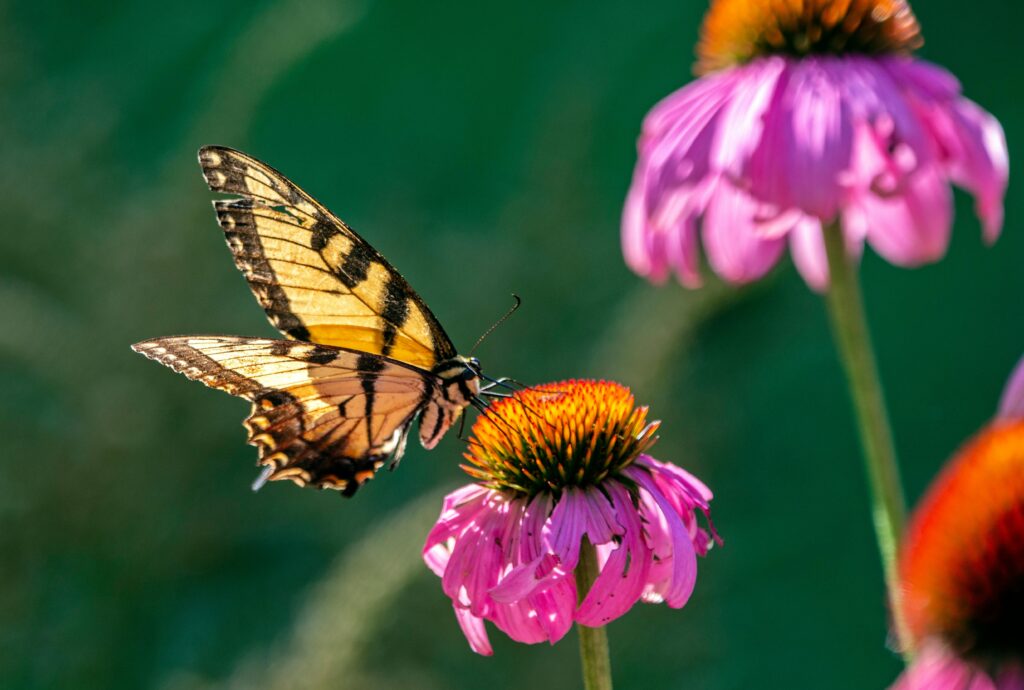
Echinacea is well-loved by butterflies and bees due to its large, daisy-like flowers that provide abundant nectar. It typically blooms in late summer to fall, thriving in full sun and well-drained soil. To care for coneflowers, water them regularly during the growing season but avoid waterlogging. Their bright purple or pink petals are particularly attractive to pollinators, making them ideal for any garden.
Coneflowers are hardy perennials that are easy to grow and require little maintenance once established. They can tolerate drought and poor soil, making them a resilient choice for attracting pollinators. Regular deadheading can encourage further blooming, and they will return year after year. Echinacea is a must-have for creating a pollinator-friendly garden.
Milkweed
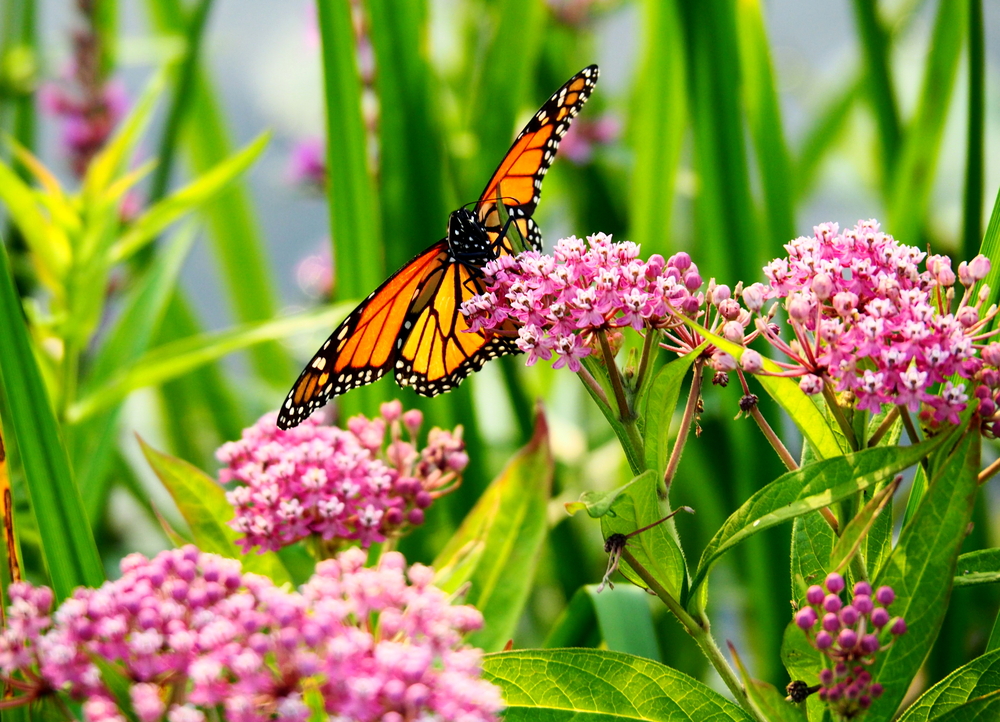
Milkweed is a favorite for butterflies, particularly monarchs, as it is the host plant for their larvae. It usually grows from spring to late summer and thrives in well-drained soil with full sun. To care for milkweed, plant it in an area where it can spread naturally, as it can grow tall and wide. The flowers attract a variety of pollinators, including bees, making it a key plant for any butterfly garden.
In addition to attracting monarchs, milkweed is a great choice for supporting other pollinators like bees. It is easy to grow in zones 3 through 9 and can be grown from seed or nursery plants. Once established, it requires minimal care and thrives in dry conditions. The bright, clustered flowers are a beacon for pollinators and a joy to observe.
Lavender
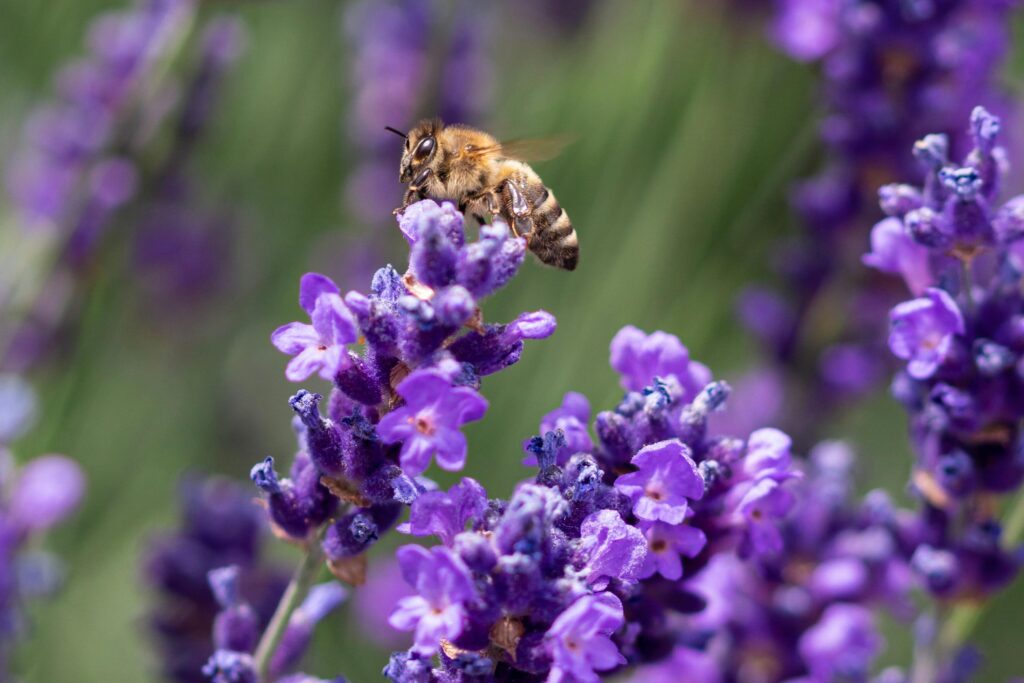
Lavender is a fragrant plant that attracts bees and butterflies due to its nectar-rich flowers. It blooms in summer and prefers well-drained soil with plenty of sunlight. To care for lavender, ensure it gets at least 6 hours of sunlight each day and water it sparingly to avoid root rot. Lavender’s purple flowers are particularly appealing to both bees and butterflies, making it a perfect addition to any garden.
This plant not only draws pollinators but also adds a calming fragrance to your garden. Lavender is drought-tolerant once established, making it a low-maintenance option. It thrives in zones 5 through 9 and requires a light pruning after flowering to maintain its shape. Lavender is an excellent choice for those looking to attract both bees and butterflies with minimal effort.
Bee Balm
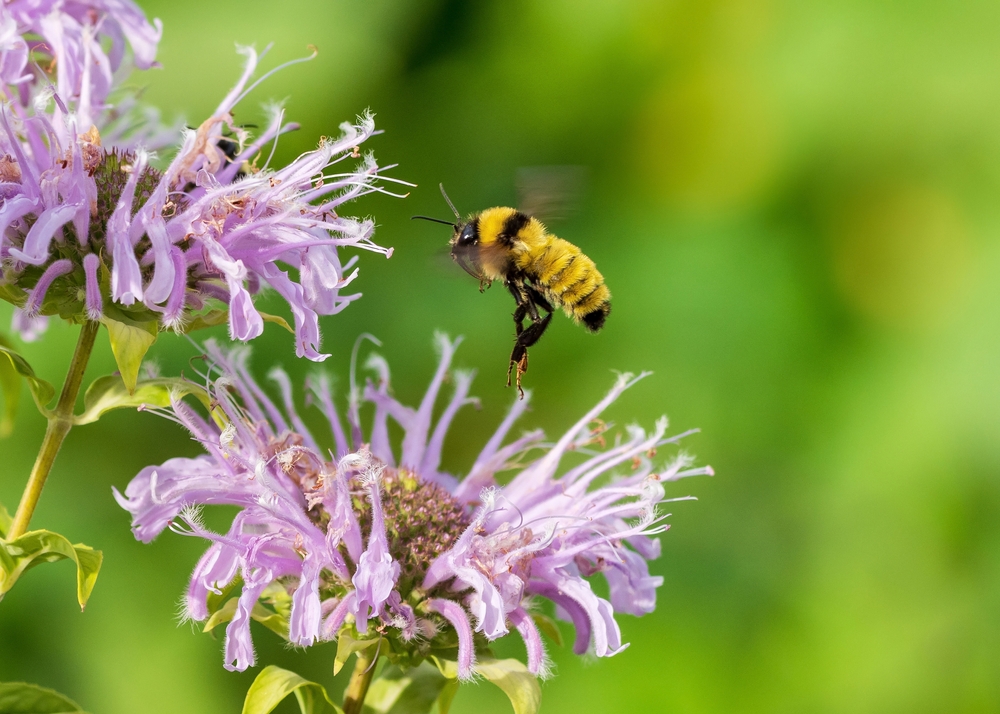
Bee balm is a flowering plant that attracts bees, butterflies, and hummingbirds with its fragrant, tubular flowers. It blooms in late spring to summer and thrives in moist, well-drained soil in full sun to partial shade. To care for bee balm, keep it in a location with good airflow to prevent mildew and deadhead the spent flowers. Its vibrant red, pink, or purple flowers are irresistible to pollinators.
Bee balm is a hardy perennial that can spread quickly, so it is best to plant it in a location where it can naturalize. It requires regular watering, especially during dry periods, but should not be overwatered. Bee balm is easy to grow in most climates and attracts a wide range of pollinators throughout its blooming season. Its bold colors and fragrant flowers make it a top choice for attracting bees and butterflies.
Zinnia

Zinnias are colorful, easy-to-grow flowers that attract both bees and butterflies with their vibrant blooms. They typically bloom in summer and fall, thriving in full sun and well-drained soil. To care for zinnias, water them regularly but allow the soil to dry out between waterings. These flowers are particularly attractive to butterflies, who are drawn to their bright, multi-colored petals.
Zinnia plants are simple to grow from seed and provide long-lasting blooms throughout the summer. They are known for their resistance to disease, making them a low-maintenance option. Regular deadheading encourages continued blooming, and they perform best in warm climates. Zinnias are perfect for adding a burst of color to your garden while attracting pollinators.
Black-eyed Susan

Black-eyed Susan is a classic flower that attracts bees and butterflies with its bright yellow petals and dark center. It blooms in late summer and fall, thriving in full sun and well-drained soil. To care for black-eyed Susans, ensure they are watered regularly, especially during dry spells, and deadhead spent flowers to encourage more blooms. These flowers are loved by bees and butterflies for their nectar-rich blossoms.
This hardy perennial is easy to grow and does well in most soil types, making it a great option for beginner gardeners. Black-eyed Susans are drought-tolerant once established, making them ideal for low-maintenance gardens. Their cheerful, daisy-like flowers add brightness to any garden while supporting important pollinators. These flowers are a great choice for any garden looking to attract bees and butterflies.
Butterfly Bush (Buddleia)
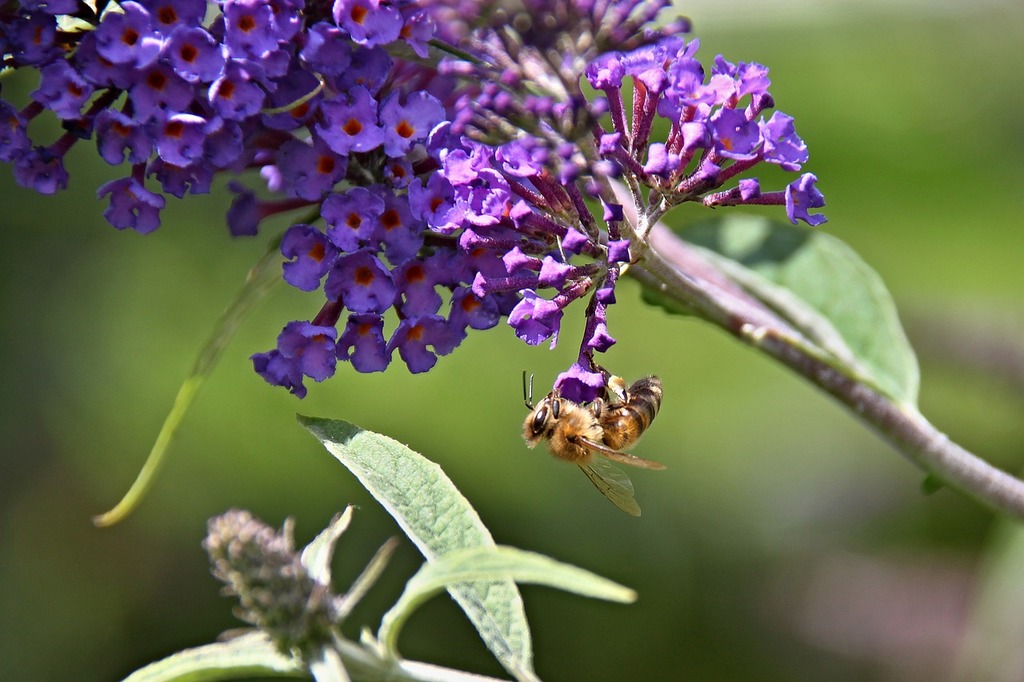
Butterfly bush is well-known for attracting butterflies with its sweet fragrance and nectar-rich flowers. It typically blooms in mid to late summer and prefers well-drained soil with full sun. To care for butterfly bush, prune it back in early spring to promote new growth and remove any dead or damaged wood. The flowers, available in shades of purple, pink, and white, are highly attractive to butterflies and bees.
This shrub can grow large, so it is ideal for larger gardens or areas where it has room to spread. Butterfly bush is drought-tolerant once established, but it benefits from regular watering during dry periods. It is easy to grow and thrives in zones 5 through 9. The abundance of flowers makes it a perfect choice for attracting pollinators throughout the summer.
Marigold
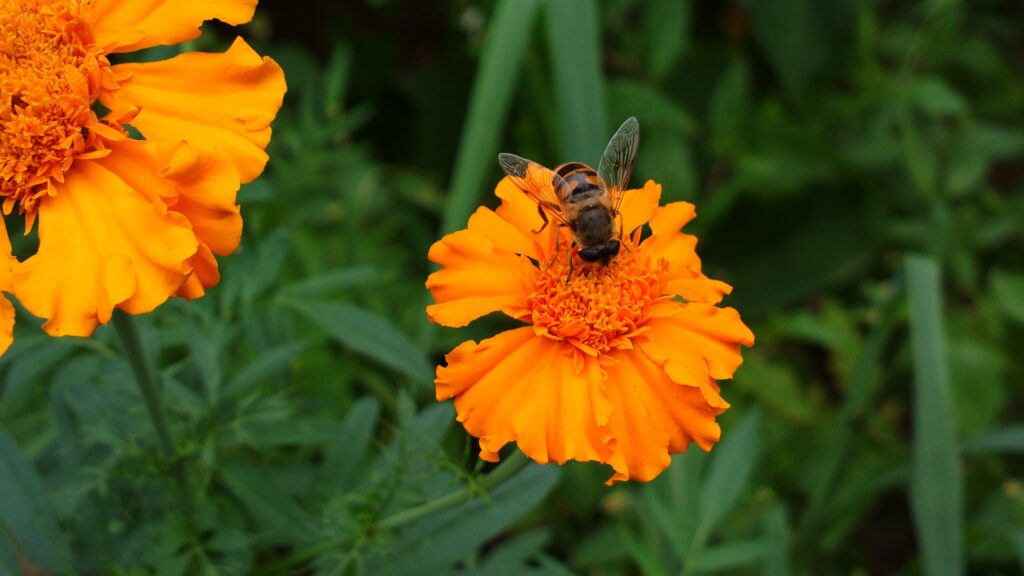
Marigolds are bright, cheerful flowers that attract bees and butterflies with their rich nectar and vibrant petals. They bloom from spring to fall, thriving in full sun and well-drained soil. To care for marigolds, water them regularly but avoid overwatering, as they do not tolerate wet soil. Their orange, yellow, and red blooms are particularly appealing to both bees and butterflies.
Marigolds are easy to grow from seed or starter plants and require minimal care. They are great for filling in gaps in the garden, as they are low-maintenance and provide long-lasting color. These flowers also have the added benefit of deterring pests, making them a natural pest control option. Marigolds are a wonderful addition to any garden looking to attract pollinators.
Salvia
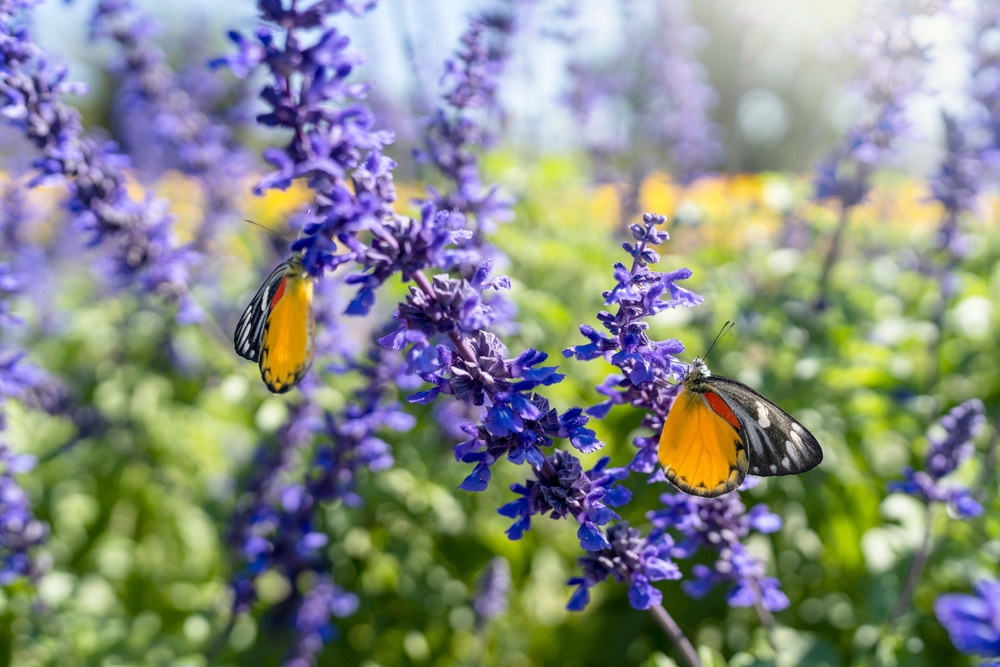
Salvia is a beautiful flowering plant that attracts bees and butterflies with its tubular flowers filled with nectar. It blooms in late spring to summer and thrives in full sun and well-drained soil. To care for salvia, water it regularly but allow the soil to dry out between waterings. The flowers, which come in shades of purple, red, and blue, are highly attractive to both bees and butterflies.
Salvia plants are easy to grow and are particularly drought-tolerant once established. They are perfect for filling in garden borders or planting in containers. Salvia attracts pollinators while adding vibrant color to your garden. It is a great choice for anyone looking to create a pollinator-friendly garden with minimal effort.
Joe Pye Weed
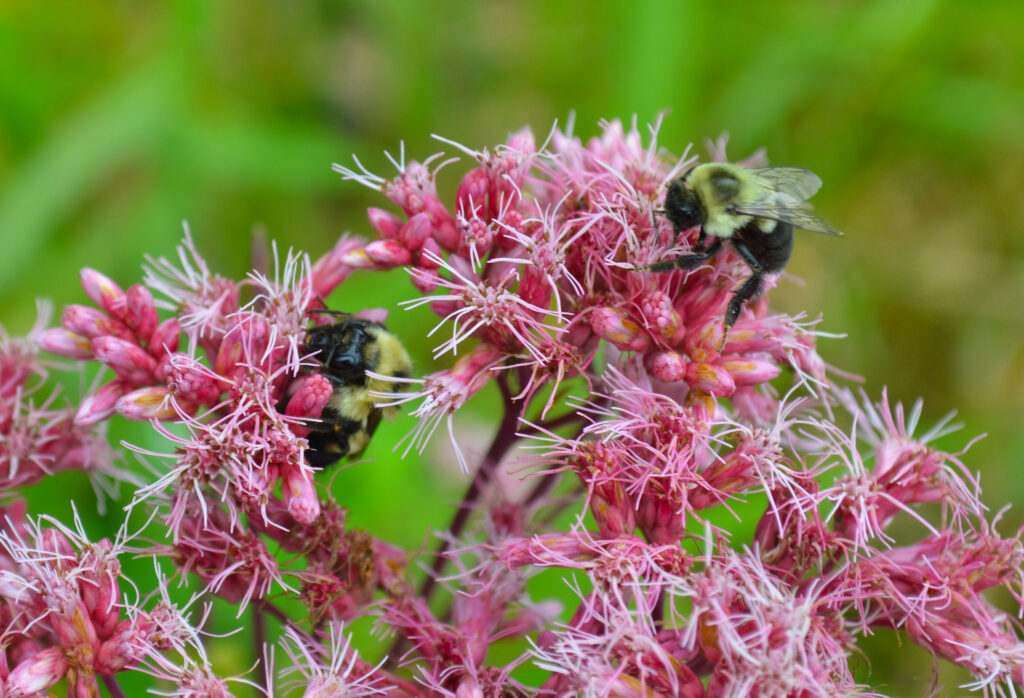
Joe Pye weed is a tall perennial that attracts butterflies, especially swallowtails, with its pinkish-purple flowers. It blooms in late summer and fall and prefers moist, well-drained soil in full sun to partial shade. To care for Joe Pye weed, ensure it gets enough water, particularly in hot weather, and prune it back after blooming. Its clusters of flowers are rich in nectar, making it a favorite for pollinators.
This plant grows quickly and can reach heights of 4 to 7 feet, making it a striking addition to any garden. Joe Pye weed is low-maintenance and works well in rain gardens or areas with consistently moist soil. It is known to attract not only butterflies but also bees and hummingbirds. Joe Pye weed is a great plant for attracting pollinators and adding vertical interest to your garden.
Lantana

Lantana is a colorful, heat-tolerant plant that draws both bees and butterflies with its tiny, vibrant flowers. It blooms throughout the summer and prefers well-drained soil in full sun. To care for lantana, water it regularly but allow the soil to dry out between waterings, and trim back spent flowers to encourage new growth. The plant’s clusters of small flowers in shades of orange, pink, yellow, and red attract a variety of pollinators.
Lantana is a great option for adding bright, lasting color to your garden during the warmer months. It thrives in hot climates and is resistant to both drought and pests. This low-maintenance plant is a great choice for attracting pollinators without much effort. Lantana’s striking blooms make it a perfect addition to any garden looking to attract bees and butterflies.
Coreopsis
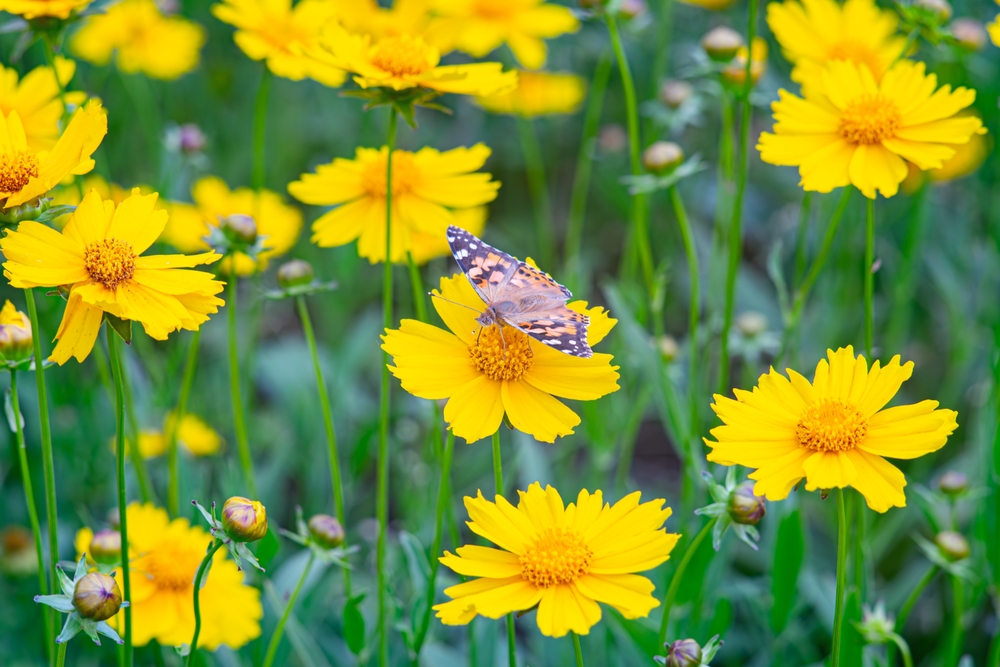
Coreopsis, also known as tickseed, is a cheerful flower that attracts bees and butterflies with its bright, daisy-like blooms. It blooms from early summer to fall and thrives in full sun and well-drained soil. To care for coreopsis, water it regularly but avoid overwatering, and deadhead spent flowers to encourage more blooms. Its yellow and orange flowers are particularly attractive to pollinators, making it a great choice for a wildlife-friendly garden.
This hardy perennial is low-maintenance and drought-tolerant once established, making it a perfect option for gardens in dry climates. Coreopsis is easy to grow from seed or starter plants and adds long-lasting color to your garden. Its vibrant blooms and pollinator-friendly properties make it a must-have for anyone looking to attract bees and butterflies. Coreopsis is a beautiful and practical choice for any pollinator garden.
Your garden can become a sanctuary for bees and butterflies with the right selection of plants. Not only do these flowers attract pollinators, but they also add beauty and color to your outdoor space. By supporting these important insects, you are contributing to the health of your garden and the environment.
This article originally appeared on Avocadu.
